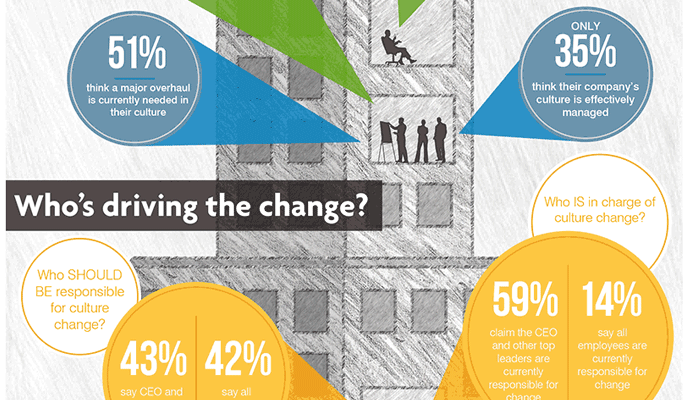Us versus Them: Reframing Resistance to Change
How to bridge the gap between those who champion transformation and those who challenge it.
A version of this article appeared in the Summer 2017 issue of strategy+business.
Anyone attempting to lead change in an organization knows to expect some resistance. Change is not a rational process; no matter how positive the future you are creating, it’s natural for humans to struggle with it.
Such resistance is no less frustrating for being predictable. At times, it can seem that all that stands between you and your goals are a few naysayers and whiners. And to those on a mission, such reactions can seem like putting one’s head in the sand. “The old business is not coming back,” one CEO told me. “We have to innovate or we will die.” Faced with negative remarks, critical questions, or stony silence, change champions naturally begin to interact more with those already on board, consciously or unconsciously distancing themselves from those who “don’t get it.”
Gradually, a wall begins to form between “us” and “them” — champions who support the change, and resisters who openly or quietly oppose it. Unfortunately, approaching change with an “us versus them” mind-set actually increases pushback. When we think of people as resisters, we don’t truly engage with them. We tend to discount their perspective, assuming that if we are right, they must be wrong.
When we think of people as resisters, we don’t truly engage with them.
“In reality, each side is paying attention to different things,” says Robert “Jake” Jacobs, an expert in polarity management — a method for dealing with chronic issues in organizations and groups. Change champions tend to pay attention to the upside of their future vision and the downside of today’s status quo. For example, those who are passionate about customers are hyper-focused on building relationships for the long term. To them, resisters seem greedy or blind.
Conversely, resisters pay attention to the downside of the change and the upside of the current state. They see the risks. When change champions refuse to discuss an issue, resistors assume they are hopelessly naive or sinister actors trying to pull the wool over everyone’s eyes. To them, it can seem fiscally reckless to divert attention from the financial aspects of the business to softer issues such as customer experience. Which of them is right? “They both are,” says Jacobs. “But each is only half-right.”
In the worst-case scenario, “us versus them” thinking devolves into factions that compete but never really engage. According to Robert Fritz, author of The Path of Least Resistance for Managers (Newfane Press, 2011), the result is an oscillation between changes, rather than real advancement. “Companies swing back and forth, from centralization to decentralization, acquisition to divestiture, customer focus to shareholder focus,” he explains. “It’s like a rocking chair: lots of movement, with very little progress.”
The solution is to reframe how we think about resistance. Rather than assuming critical thinkers are resisters, we would do better to treat them as guardians. Guardians see what needs to be protected, and the trust that can be destroyed by a broken promise or a shortcut. Who else will ask the hard questions? Guardians keep us honest in the face of self-delusion or blind spots. For example, one executive I worked with learned that his frontline professionals were convinced that new data he wanted to capture would be used in a punitive way. He had no intention of doing so, and had dismissed their concerns as ridiculous. But, in fact, he had provided no assurances to the contrary, and such abuses had occurred in the past. From the employees’ point of view, he later acknowledged, their questions were legitimate. Seeing this, he gave them practical assurances — and backed them up over time through his actions.
When you approach guardians as responsible, thinking adults (with imperfect information and biases, just like you), you demonstrate genuine respect. You gather input, not as a way to get them to buy in to the change, but because they have important information you may be missing. Remember Stanley Tucci as the risk management officer in the movie Margin Call? He isn’t resisting the new direction out of spite; he knows the risks are too great.
Once you have recognized your guardians, you can turn the wall between us and them into a bridge. In the “getting unstuck” process outlined by Jacobs, you start by asking about the upsides of the current reality. What is important? What strengths should be protected? What have we promised? Get specific, ask for the history. Next, ask about the downsides of the change. What could go wrong? One manager I spoke with worried that outsourcing would hamstring his company — and he had good data to support his concerns. In another company, I heard people joking about the company’s new values initiative. Their worry? That the effort would become fake. Bringing these risks to the surface helped the first company avoid a bad decision, and the second to avoid “commitment drift.”
Once you have recognized your guardians, you can turn the wall between us and them into a bridge.
Let’s be clear: You aren’t asking for permission to change. You still need to make tough calls and stand for your values. You will have real differences to work out. But engaging your guardians with respect gives you greater intelligence, keeps you honest in the face of dysfunctional momentum, and highlights where safeguards are needed. Having acknowledged others’ valid points and planned to handle the biggest risks, you can add your perspective, highlighting what needs to change in the current situation and the possibilities for the future. Throughout this process, you will learn about misconceptions and assumptions to clear up in your communications.
For their part, guardians can do a better job of clarifying what they are protecting, and articulating it in a constructive way: Don’t just assume change champions see the risks and don’t care. Then, together, you can decide how to approach the future you want. According to Fritz, “We shift from the oscillating pattern into an advancing pattern when we focus on a shared purpose that builds on the things that work now.” For example, one plant manager told me he discovered his employees were resisting added safety precautions because the procedures made it hard to respond quickly to customers. Rather than overriding or dismissing them, he used the tension as a focus for innovation, asking his teams, “How might we increase safety and reliability without sacrificing customer responsiveness?” This is the kind of leadership needed to create a successful organization for the long term.
Reprint No. 17204




